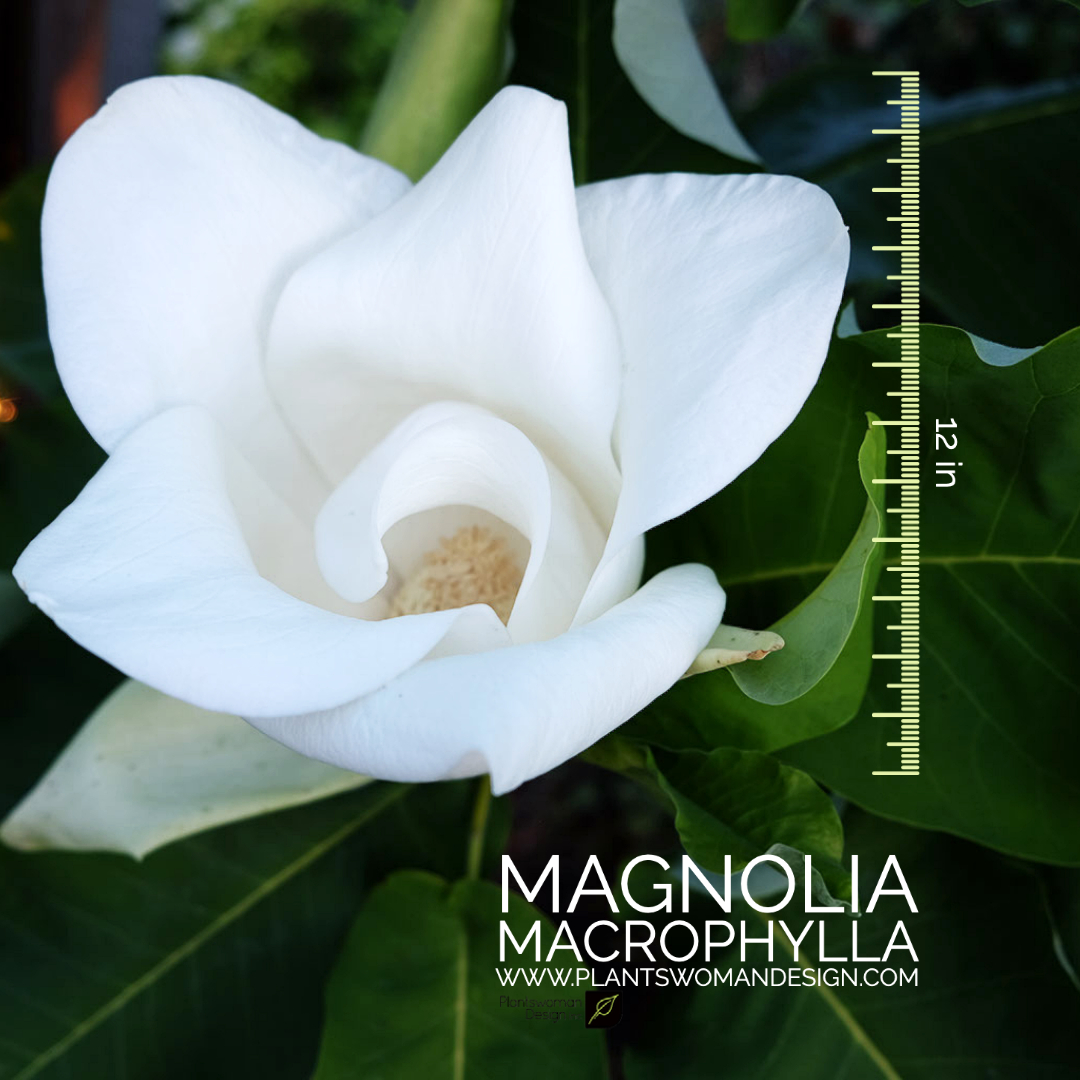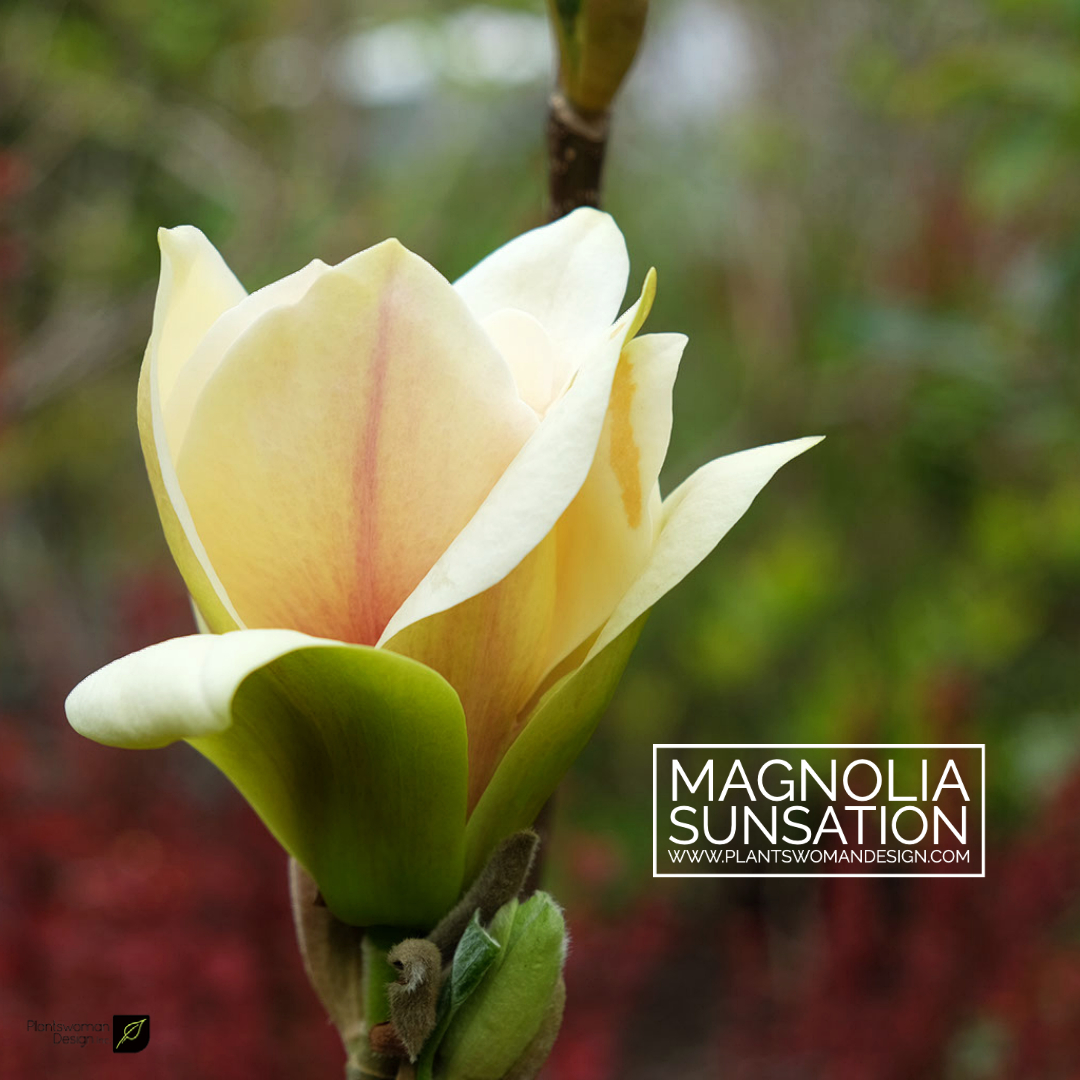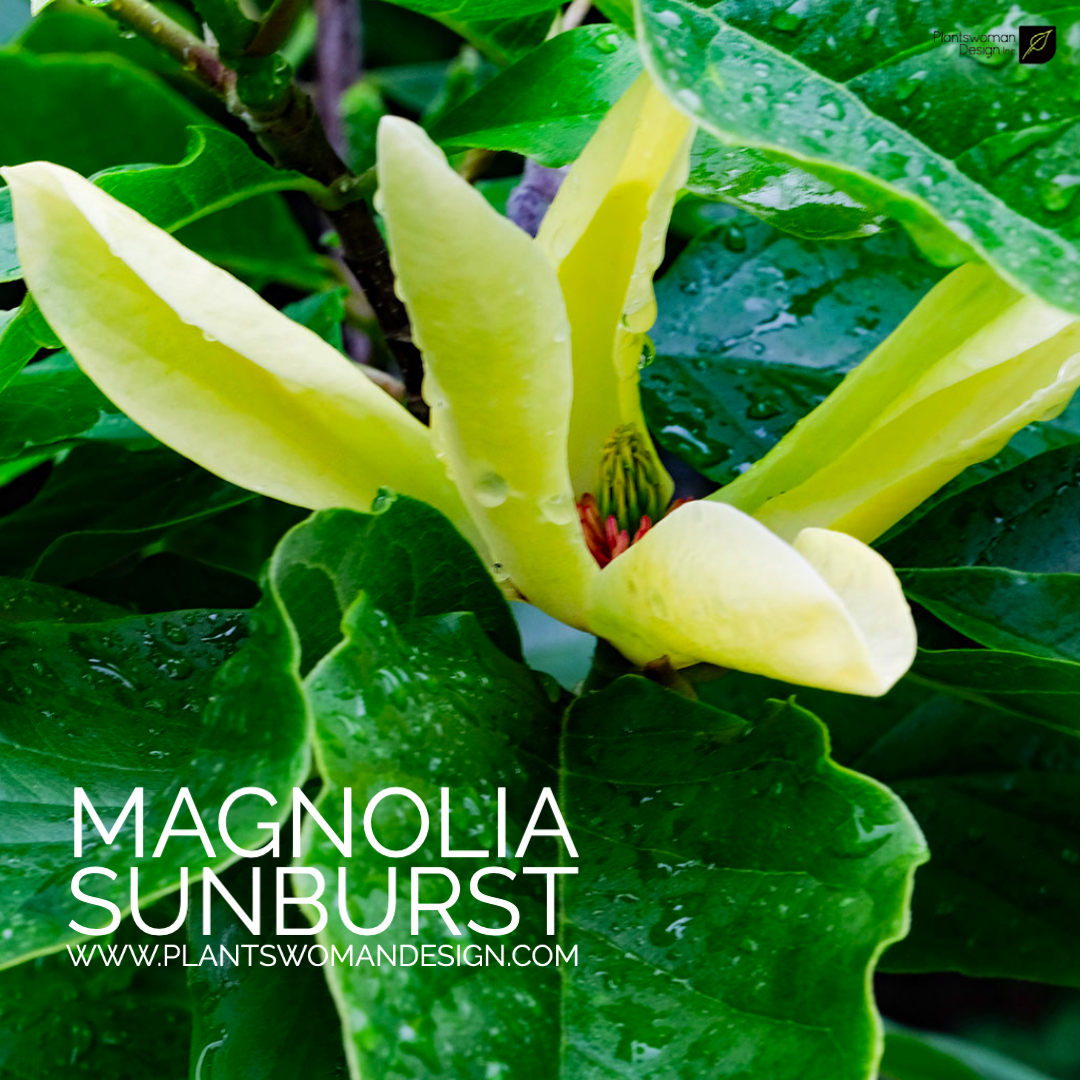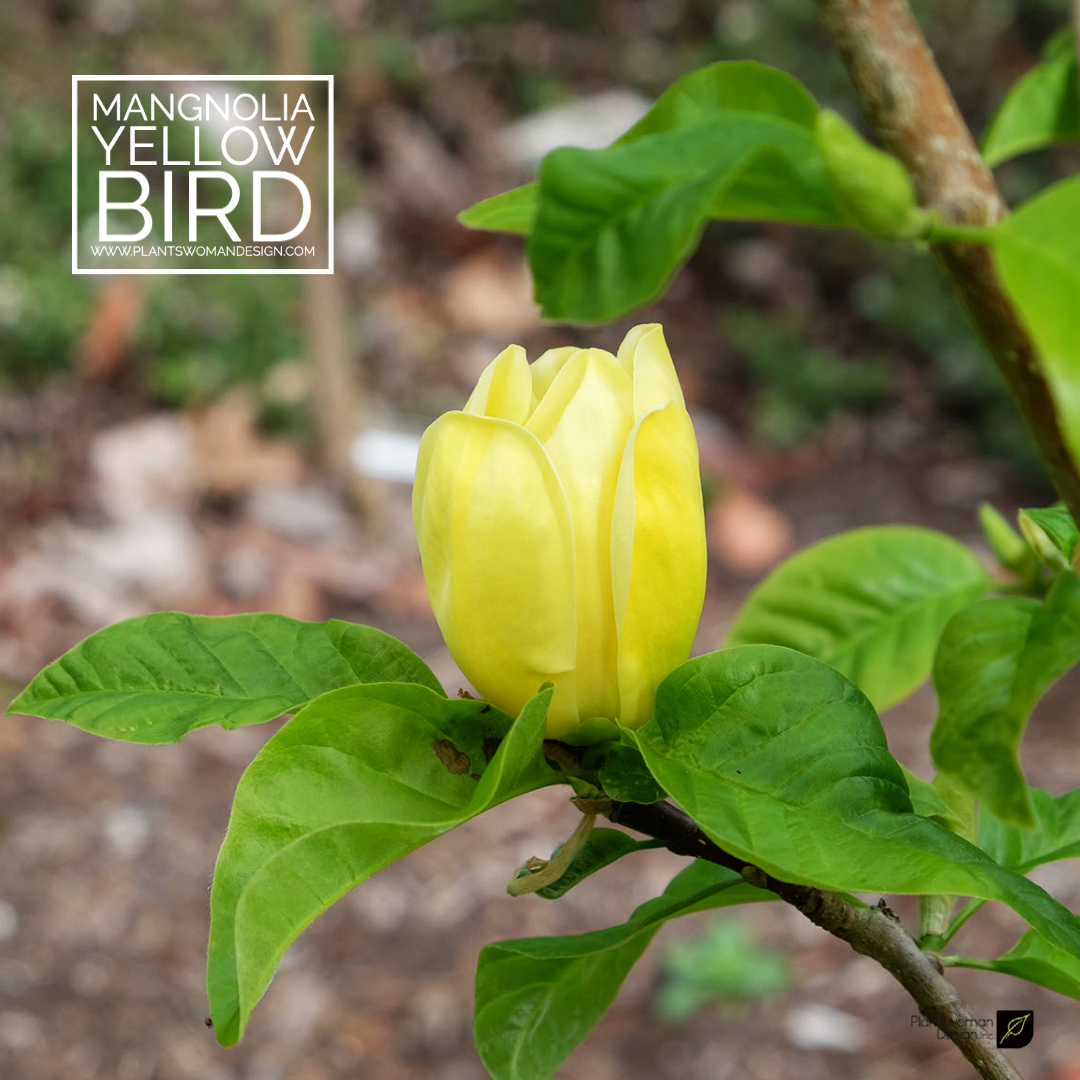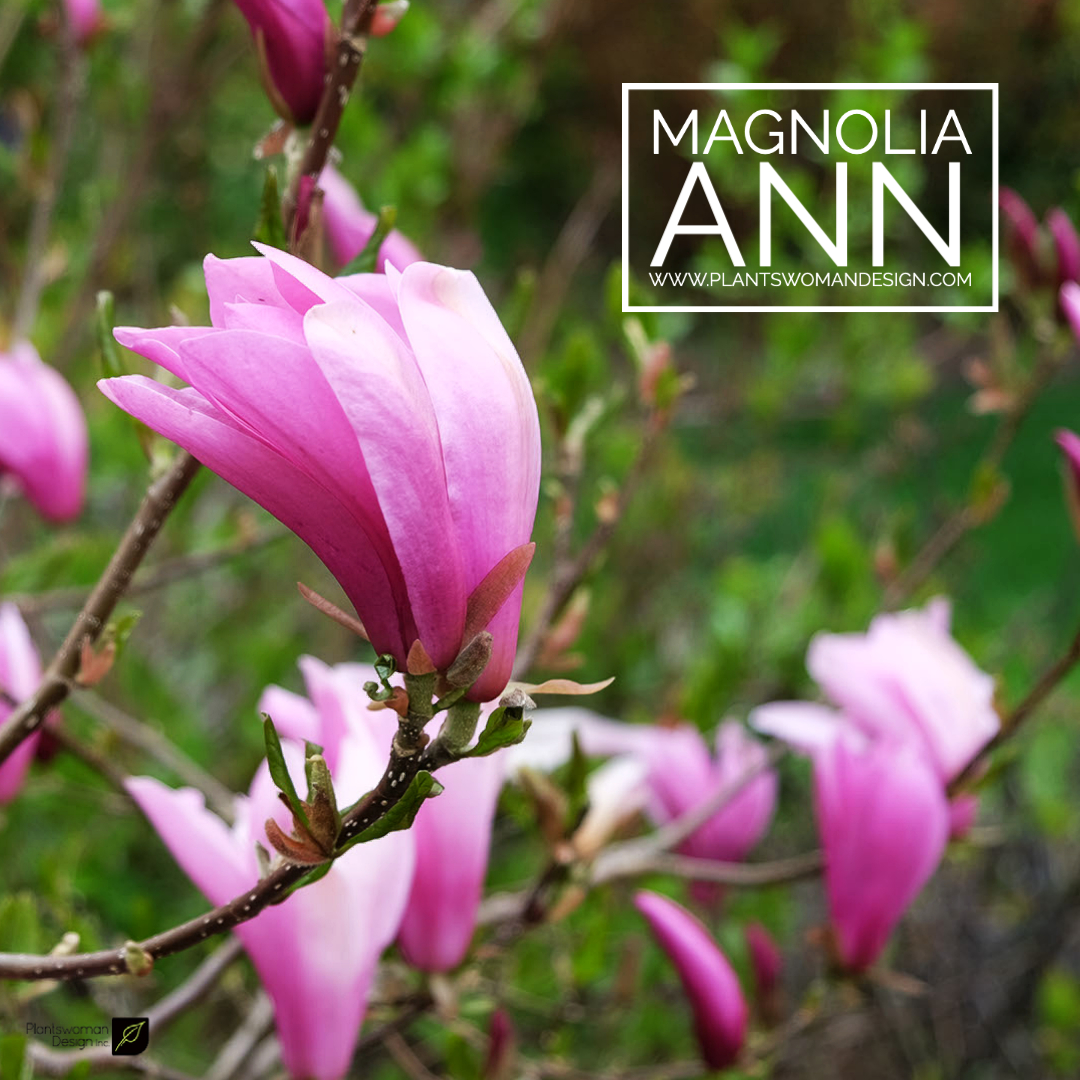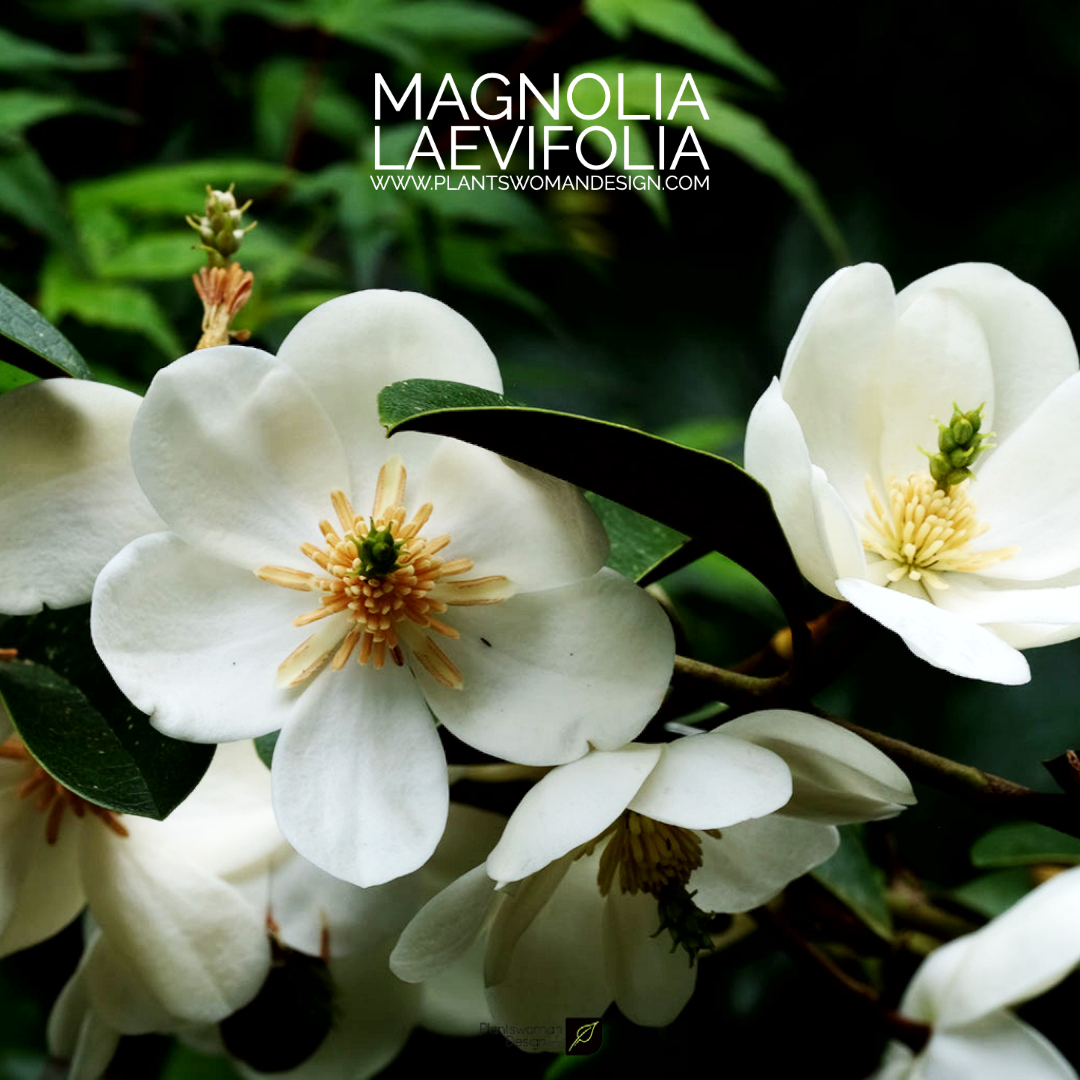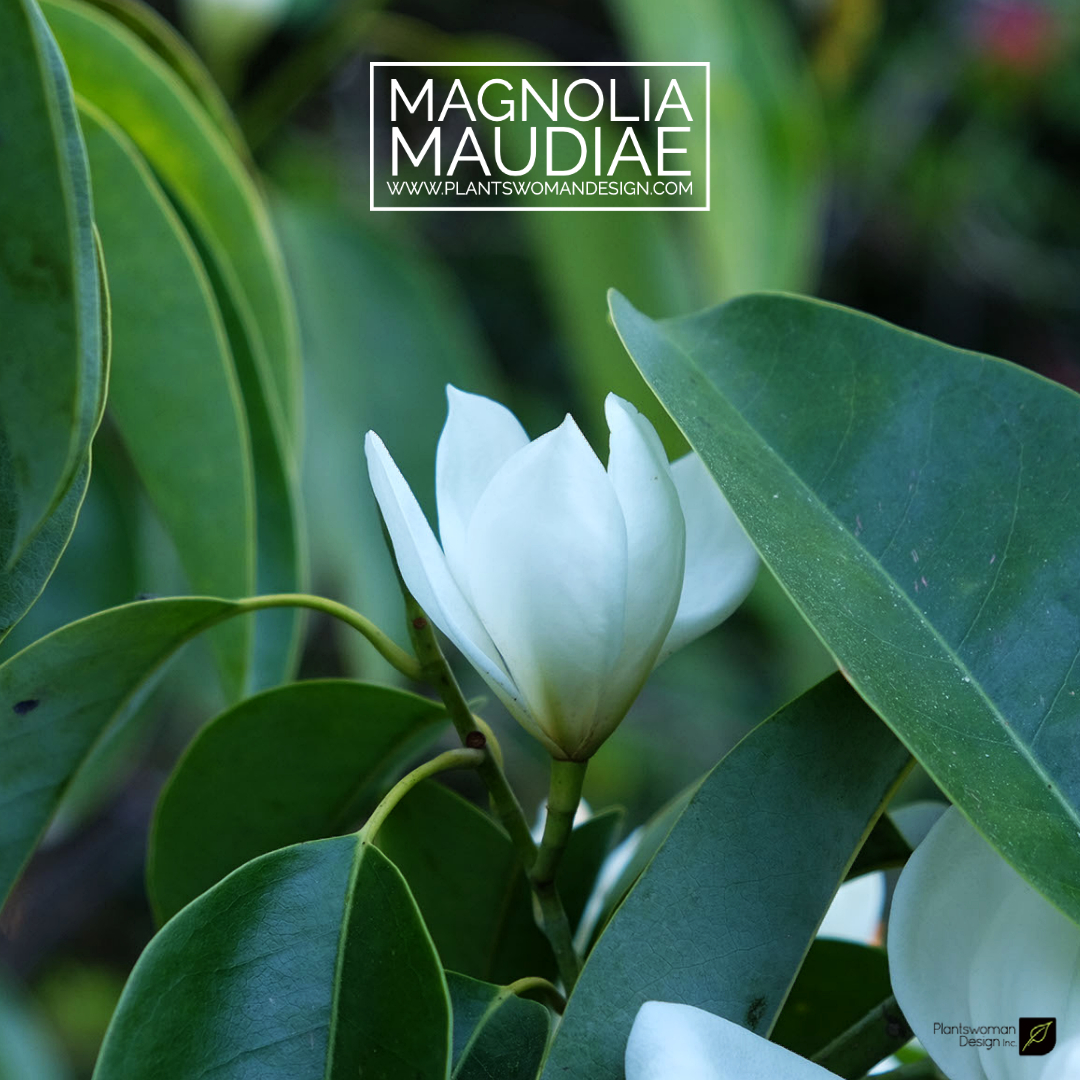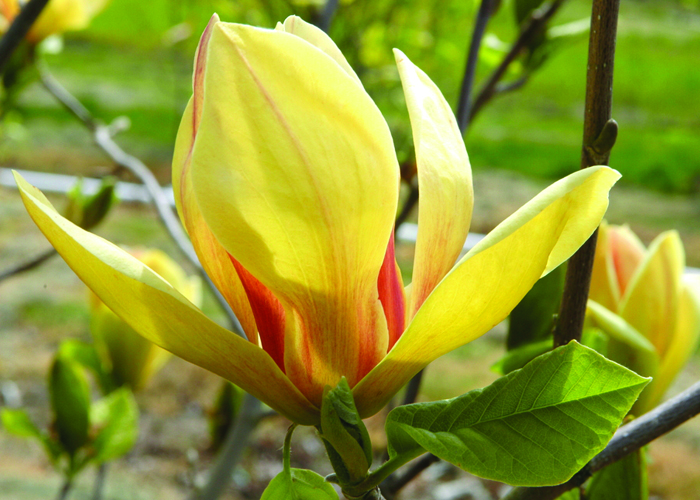
by Susan | Apr 2, 2021 | Plants I Dig
I love magnolias. They are seductive and diverse little gems of the garden. I am eagerly awaiting this collection of Magnolias to make their appearance this spring!
Mactophylla has the largest bloom and is a dwarf form of the Bigleaf Magnolia and some botanists list Ashe as a subspecies of Bigleaf Magnolia (Magnolia macrophylla ssp. ashei). Ashe Magnolia trees are very similar to Bigleaf Magnolia trees except that they tend to grow much shorter and flower at a younger age. The flowers and leaves are still just as large, with the leaves growing up to two feet long and the flowers more than a foot in diameter!
I love the yellow flower with pink in the base, like the sun rise. 15-20 feet high
Magnolia Sunburst is a very floriferous tree and is regarded as excellent! The deep canary-yellow flowers have narrow tepals that open just as the foliage starts to open, making the tree look like it’s covered in glowing yellow candles. Heavy textured foliage begins a rich bronze-purple. Fast, upright grower to 30′.
Magnolia ‘Yellow Bird’ boasts bright canary yellow flowers which appear more dependably since they emerge with the foliage late in the spring after the danger of frosts. Full Sun, up to 40 feet high with 3 1/2 inch flowers.
Magnolia Ann’s flowers range from deep pink to purple. It grows in shrub-like form instead of a tree. Up to 15 feet in height.
Laevifolia is a small structured tree covered in miniature magnolia blooms. Excellent small scale evergreen Magnolia with handsome rounded leaves touched with brown indumentum (fur). In mid spring masses of large 4″ ivory white intensely fragrant flowers explode all over tree. The flowers have a rich and penetrating lemon aroma. About 9 feet at mature height.
Maudiae is one of the easier winter blooming evergreen Magnolias to grow in mild climates. Large, 6 in., pure white flowers are very fragrant (lemon) and arranged along the branches, rather than at branch tips. A Maudiae will form small trees or work well as potted specimens. They do well on the West Coast and in the Southeast.
Read more about the Magnolias that have made appearances in my gardens over the years.
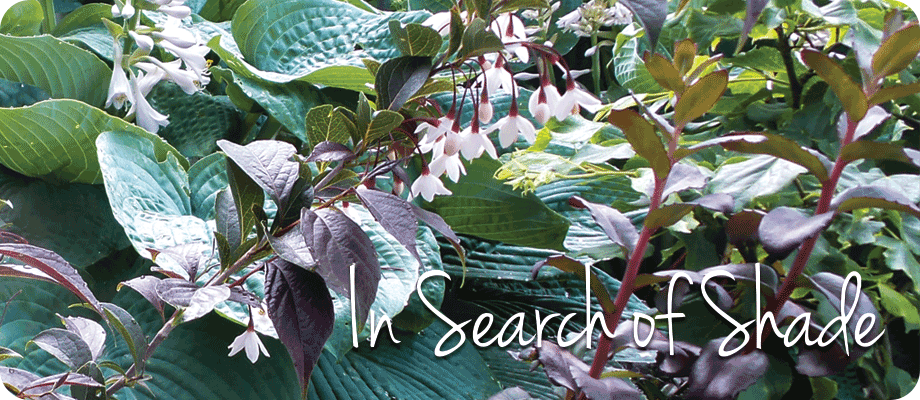
by Susan | Jun 12, 2015 | LB Tutorial: Design Challenge
Not surprising I suppose, most people in Washington State don’t have to worry about too much sun. Most lots are shady with many native trees which usually provides a place with enough shade to have a shade garden. As Robert Jones recently said ‘Shade plants are the more interesting plants’. I love shade plants but on my little piece of earth there is a lot of sun. Most of the property receives full sun all day except by the upper pond. That area receives the hot afternoon sun. Many good shade plants cannot take that type of exposure. The wonderful ariseamas, trilliums, hellebores, epimediums, paris, michela, camillia, solomans seal… You get what I mean, these cool shade plants will not be happy there.
The solution? Plant trees!
This means I actually get to plant some wonderful trees I’ve wanted to grow including some trees of my plant sale adventures like the Magnolia Wilsonii, Magnolia laevifolia, and Aesculus Hisp. ‘laciniata’. Of course there are some trees that have been removed from other gardens that were not good enough after delivery or just weirdly shaped that also get a place in my garden. There is a Japanese maple that was delivered from a grower that looked so bad I couldn’t put it in a client’s garden. I’ve had it for a while and it still doesn’t look good. In it went anyway. A black tulip magnolia with ½ a root ball, I’m not sure will make it. A dogwood that refused to bloom at a customer’s that I replaced with a more prolific bloomer. A red horse Chestnut that I purchased but never had a place for before, and a new cultivar of Cornus called ‘mandarin Jewel’ with orange fruit in the fall.
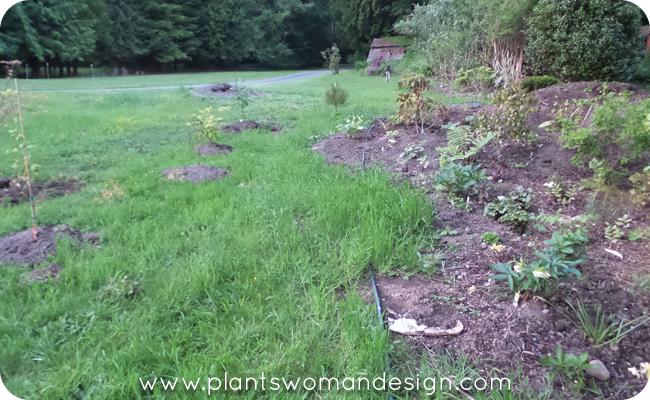
“before” – plant storage area
Now for the plan: I have been placing plants along the edge of the pond in partial shade since I moved in. Plants I saved from my old house and new things I’ve collected. The edge of the pond has gravel around it with lots of black plastic. To create the bed I removed the gravel and black plastic. Then, mixing new soil and compost together, I built up the bed and planted.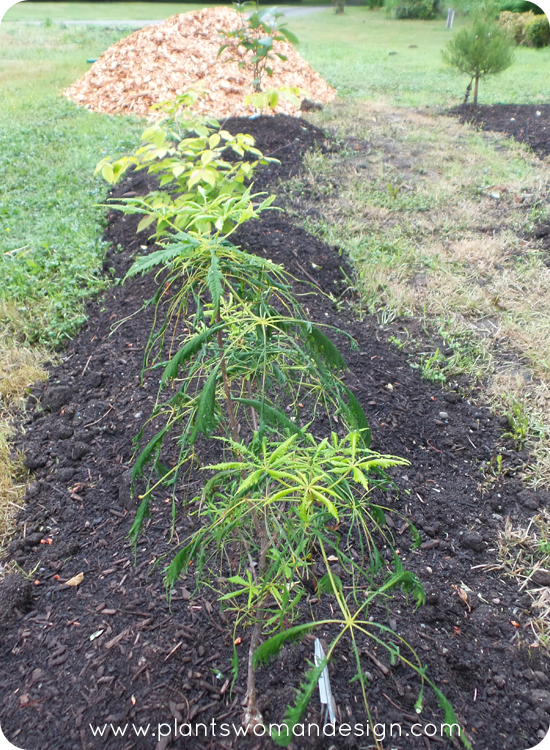 I want the trees to provide shade but I also needed to create a place to walk next to the shade plants. Placing the trees close together would obliterate the view of the plants so I placed them about 20 – 25 feet away from the shade plants. This will be a path after removing the grass there and putting down a good layer of wood chips. I hope to contact a wood-cutter to give me some of the chips left over from clean up.
I want the trees to provide shade but I also needed to create a place to walk next to the shade plants. Placing the trees close together would obliterate the view of the plants so I placed them about 20 – 25 feet away from the shade plants. This will be a path after removing the grass there and putting down a good layer of wood chips. I hope to contact a wood-cutter to give me some of the chips left over from clean up.
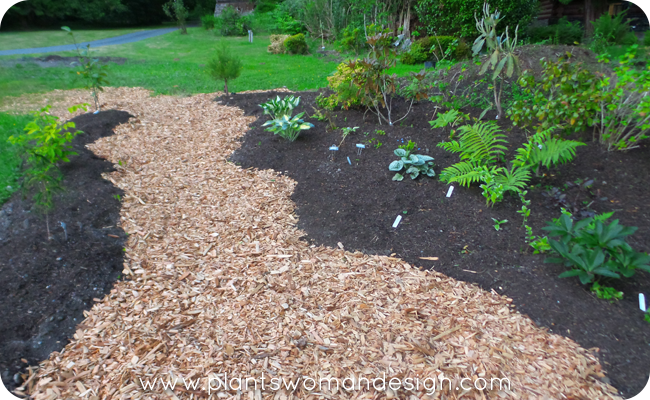
“after” – fully planted bed with walk
Cedar Play chips is the best material to use for the pathway. You can use other types of chips but the flat play chips make a good walking surface. The garden beds were weeded before the compost when down and the play chips in the center.
You can now see the pathway better and the indent of the beds. I’ll keep you posted as it grows in.

